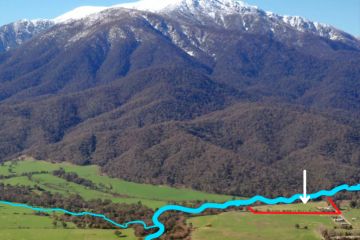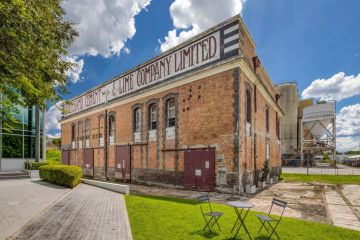The Canberra suburbs where house prices have fallen the most over the past year

As Canberra experiences its first fall in house prices in more than six years, new Domain data shows suburbs in Canberra’s north have been hardest hit by the downturn.
Franklin has experienced the greatest drop, with the median house price down 9.6 per cent year-on-year, followed by Palmerston and O’Connor, down 8 per cent and 7.6 per cent respectively.
The data is based on suburbs with more than 50 sales in either houses or units over the 12 months to March 2019. Only 42 suburbs fit into this category for houses and 21 for units.
Taking unit medians into consideration, prices have fallen across most suburbs on the light rail line.
Not only are house prices down in Franklin and O’Connor but Downer’s median house price is also down 6.3 per cent year-on-year. Median unit prices have fallen in Dickson, the City, Braddon and Franklin but have jumped in Turner and Watson, up 5.3 per cent and 3.5 per cent respectively.
Median house prices (March 2019)
| Suburb | Median price | YoY | 5 years |
| Franklin | $687,000 | -9.6% | 29.9% |
| Palmerston | $630,000 | -8.0% | 31.1% |
| O’Connor | $1.04 million | -7.6% | 38.7% |
| Downer | $805,000 | -6.3% | 36.4% |
| Banks | $487,000 | -4.5% | 7.7% |
| Bonner | $626,000 | -3.6% | 18.8% |
| Casey | $612,000 | -2.7% | 45.7% |
| Nicholls | $830,500 | -2.4% | 10.7% |
| Theodore | $535,000 | -1.5% | 10.8% |
| Weston | $705,000 | -1.4% | 36.1% |
Domain senior research analyst Nicola Powell said falls were occurring in light rail corridors because they were coming off their peak.
“Many of these areas experienced a flurry of activity when the light rail was initially announced, which is a number of years ago now. What that did was spark activity and therefore resulted in price growth,” Dr Powell said.
“[The] initial excitement around the property market when the announcement was first made has wavered now slightly and I think there’s less hype around having strong capital gains, which is why we are seeing a bit of a drop because it’s coming off its peak.
“[Light rail] is a long-term strategy to improve infrastructure and, when you look at population growth and the overall economy in Canberra, these suburbs are likely to show price growth again.”
- Related: Rents continue to rise in Canberra’s inner suburbs
- Related: Canberra’s auction performance at lowest point since 2013
- Related: ACT’s most expensive federal electorate experiences market slowdown
Overall, house prices in Canberra are down 2 per cent year-on-year.
In the unit market, Phillip has had the greatest fall, down 13.8 per cent year-on-year, followed by Mawson and Bruce, down 13.4 per cent and 11.3 per cent, respectively.
On the positive side of the market, the south-side suburb of Richardson has experienced the highest jump in house prices, up 13.4 per cent year-on-year to a median of $550,000.
Peter Blackshaw Tuggeranong principal Robert Peaker said the suburb was essentially playing a game of catch-up.
“[Richardson] has been a bit behind other suburbs in Tuggeranong, and it’s catching up with the growth of those areas,” he said.
“It’s a reasonably small suburb and there have probably been more transactions than in previous years.”
Median house prices (March 2019)
| Suburb | Median price | YoY | 5 years |
| Richardson | $550,000 | 13.4% | 29.3% |
| Holder | $670,000 | 12% | 24.9% |
| Ainslie | $1.085 million | 11.2% | 58.1% |
| Calwell | $608,250 | 10.8% | 32.2% |
| Chisholm | $597,500 | 8.6% | 34.3% |
| Macgregor | $530,000 | 8.2% | 23.3% |
| Latham | $573,000 | 8.1% | 28% |
| Gordon | $567,500 | 7.9% | 21% |
| Holt | $535,000 | 7.9% | 23% |
| Narrabundah | $940,000 | 6.8% | 42.8% |
Holder, Ainslie and Calwell also experienced double-digit growth at 12 per cent, 11.2 per cent and 10.8 per cent respectively.
Of the top 10 best performing suburbs, six had a median of less than $600,000 and all bar two have a median under Canberra’s overall of $722,440.
“Some of these lower-priced areas are driven by affordability constraints,” Dr Powell said.
“Some of these lower-priced suburbs offer affordability and are substantially below the median price in Canberra, that’s probably one of the reasons we are seeing strong growth.”
Melanie Schranz and Luke Plunkett sold their Franklin house in March, after deciding to upsize.
They decided to auction their three-bedroom house with a four-week marketing campaign, but they said they saw the market soften during that time.
“[During the campaign], the market had dropped, and a house on the same street as ours sold for a lower price, like maybe $100,000 less than what we expected so we were quite worried, it was very stressful,” Ms Schranz said.
“I also had a friend selling a house in Franklin that went to auction a week before ours and it got passed in because there was not a single bidder.”

Ms Schranz and Mr Plunkett said they had lowered their expectations going into the auction, but their house sold under the hammer after there were 14 registered bidders at the auction.
The pair attributed their result to the marketing and the fact it was in a price bracket where “people could still afford to get a mortgage”.
LJ Hooker Gungahlin agent Antony Damiano, who sold Ms Schranz and Mr Plunkett’s home, said he was surprised that Franklin had had the greatest falls in median house price.
“I don’t see the market [in Franklin] tumbling, but sales results are falling,” he said.

Mr Damiano echoed Dr Powell’s comments that it was coming off from a peak.
“We have come from a market where agents are used to putting up a property online and that’s all you had to do to sell, whereas now agents have to put in a lot more work,” he said.
Mr Damiano said he believed, in spite of the falls, that Franklin was “future-proof for growth” due to its location.
We recommend
States
Capital Cities
Capital Cities - Rentals
Popular Areas
Allhomes
More







